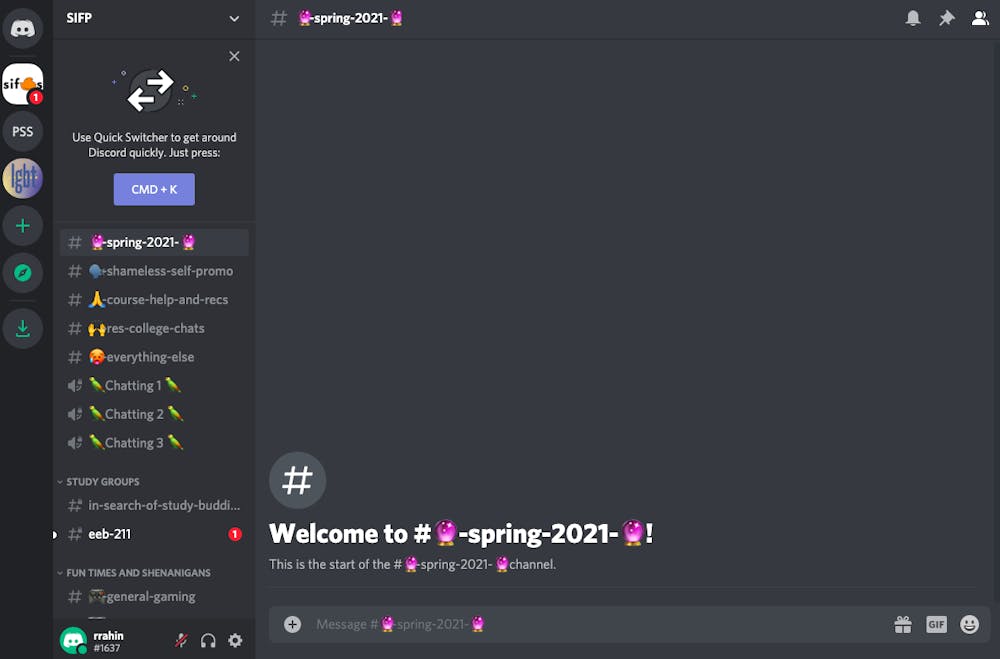In lieu of in-person meetings, a variety of University clubs and student organizations have turned to Discord for communication and community building.
Organizers and leaders of University clubs praised the unique structure of Discord servers as one of the key reasons for the switch, but also noted multiple complications while using the platform.
Discord is a messaging app that was first released in May 2015 and is prominently used by gamers. A Discord server usually consists of multiple “channels,” with each channel having a different theme or purpose. These channels can incorporate voice and video chat in addition to the text chat that accompanies most communication/messaging apps.
“You can replicate, kind of, the classroom experience and a lecture, but it’s a lot harder to replicate things like hanging out in a dining hall or in your dorm room or just walking around together,” stated Ashlee Shaw, Associate Director of the Scholars Institute Fellows Program (SIFP).
SIFP began using Discord this year to communicate. Their server includes over 40 channels, including voice chat rooms, study groups, and even a channel to share pet photos.
“We wanted to create a sort of flexible space where students have the ability to have small conversations or livestream or really just gather that wasn’t strictly structured,” Shaw said.
Discord also has bots that are able to perform different tasks within the chat room and can even be coded to obey specific commands. However, Princeton Debate Panel (PDP), which also used Discord, reported multiple problems with this feature.
“This weekend we had a tournament where they had created a bot to automatically sort everyone into the rooms they were supposed to be in ... because the tournament would’ve been 200 people being sorted into rooms,” PDP president Jane Mentzinger ’22 said. “The bot couldn’t handle it.”
For most groups however, Discord has been essential in COVID-era community building.
“We used it during FSI [Freshman Scholars Institute] and it was really, really effective,” Shaw said. “There’s always this warm-up period where people figure out what the social norms are ... that period of people realizing, ‘It’s okay, you can post memes here,’ ‘you can talk to each other and have these casual spaces.’”
“It’s kind of like a virtual Frist,“ Class of 2022 president Santiago Guiran ’22 remarked, noting that Discord servers allow for multiple virtual rooms, mimicking the community engagement at Frist Campus Center. “I feel like it’s something people can dig, and if it’s something that we can get the ball rolling with, then I can definitely see it becoming better than other alternatives we’ve been presented with.”
The Class of 2022 currently utilizes a class-wide Discord server, run by their class government.

While the future of Discord as a common mode of campus-wide communication is still unknown, many are hoping that it can continue to be used to increase engagement among students.
“Students are starting to warm up to the idea of using the platform,” Whitman RCA Kelton Chastulik ’21 said. “I don’t see it as something that takes over any other mode of communication, but I do think it will be a viable option for students down the line.”
Discord updated its app in March to better accommodate students including the expansion of their Go Live feature, which now allows up to 50 people to live video chat. Discord also recently created “classroom templates” which makes online classroom navigation easier for teachers and students.








